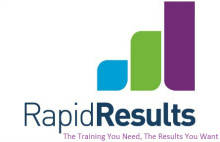The past few years have seen changing trends in training habits for a lot of businesses. Compliance training and essential training continue to happen because without them some businesses couldn’t function. Other training though, often considered optional training or a ‘nice to have’ such as customer service training or other soft skills training has been cut from budgets for two main reasons:
Time and Money
It seems to be the same story the world over. Businesses have less time to be able to train their staff and budgets are tightening for all ‘non-essential’ activities. Unless training is seen a business-critical, it’s unlikely to be given a priority. This is an interesting paradox because by not training staff effectively businesses may actually be harming their opportunities and customer relationships and in turn their profits.
Training – why?
Let’s take a comparison with a new piece of machinery: A company that invests a few hundred thousand dollars in a new piece of equipment wouldn’t dream of setting a staff member loose on it without the proper training for at least the following reasons:
1. They wouldn’t want the staff member to hurt themselves
2. They wouldn’t want them to damage the machine
3. They would expect them to work to optimum efficiencies and produce excellent results.
It’s a shame that businesses don’t take that same approach with their staff and their most important asset – their customers. Surely the same logic would stand here. You wouldn’t want to let your staff loose on your most important and expensive asset would you? You would want them to:
1. Enjoy their experience at work so they stay with you
2. Provide the best experience for the customer so they remain a customer and become an advocate
3. Be able to serve, sell and resolve to the best of their ability.
So what can be done here and where is the future trend moving? There’s no doubt that the Time and Money issue is here to stay, so how do we possibly help our staff to be the best they can with these two constraints?
A futurethink white paper entitled, “The Future of Learning & Development 2012” stated: “Gone are the days when people could sit in a classroom without multiple interruptions or the fear of political backlash. Stress levels and attention spans being what they are today (short), “micro-courses” are seen as the wave of the future.”
The Forgetting Curve
Micro courses are defined as short, hard hitting training opportunities that focus on some key areas or techniques that are easily applied straight back into the job. We know that traditional classroom training (where a group of people sit in the classroom for a day or two and receive instruction) although a great learning experience, is becoming an expensive option for many businesses for both capital investment and for time to release their staff. In addition, without the reinforcement, the main messages of the session can be lost almost before the session ends. Consider the ‘Forgetting Curve‘:
You can see by this curve, developed by Hermann Ebbinghaus in 1885, shows that even after 9 hours more than 60% of what we were exposed to is forgotten. Indeed the most of what we can expect to retain is around 20% – unless it is reinforced.
No Time
Some businesses are now adopting practices whereby their staff are engaging in shorter micro courses – sometimes less than 90 minutes or using some form of engaging e-learning or a combination of both to improve the adoption of skills, creation of new behaviours and maximizing return on investment for training and development.
An article by FORBES on 1/08/2013 entitled: “Why CEOs Want Faster Training–No Matter The Cost” shared the staggering insight that 42% of those surveyed say the length of training or learning course was a “more important deciding factor than its content”. We may deduce from this statistic that even though a more aligned and suitable course was available, due to the length of the course, an inferior one was chosen due to it taking less time!
So the trends are definitely heading towards less time spent in training and less cost being spent on training. A blended approach is an excellent way to combat these areas where businesses afford some group or classroom learning mixed with some mentoring or coaching and some self-directed online learning.
I Want it When I Want it, How I want it!
Research discovered in some HR groups using LinkedIn as a forum that many businesses were being told by their staff that they wanted to have access to learning as they want it, when they want it. It’s not useful for them to know that a training course on conflict resolution will happen in three months when they have a conflict to resolve now. They want to be able to know where to go to resolve the issue, understand what techniques are available and get on with it. Similarly, if they attended a course 6 months ago and forgot 80% of it, what good does it do them now – unless they have a system to reinforce it?
When providing learning or training opportunities for your staff, consider these fundamentals and seek out the best option for them:
1. How does this person best learn?
2. How can I reinforce this learning?
3. How will I keep it sustainable?
4. How easy is it to apply in their roles?
Moving forward, businesses are likely to be able to up-skill their staff with a host of options that may include traditional classroom training, coaching and mentoring, online learning, short workshops, group discussions, role-plays etc. It’s important to test these areas out, find out what works for individuals and recognise that one size does not normally fit all.
For a look at short self-directed learning options check out www.learningplanet.me and www.rapid-results.com



Recent Comments